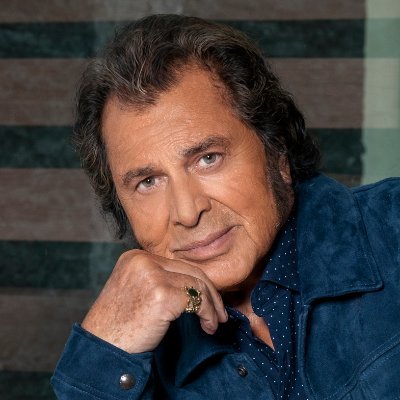Engelbert Humperdinck’s “Spanish Eyes” is a timeless ballad that encapsulates the elegance and emotive power of romantic music — a masterpiece that continues to resonate profoundly with audiences around the globe. Featured originally on his landmark 1967 album, The Last Waltz, this track remains among Humperdinck’s most iconic and cherished works. Celebrated as one of the greatest vocalists of his era, Humperdinck’s deep ability to channel raw emotion and artistic depth into his songs has solidified a loyal fanbase, with “Spanish Eyes” standing as a perfect testament to his artistry.
This exploration peels back the layers of this musical gem, delving into its rich instrumental arrangement, heartfelt lyrical poetry, and the emotional resonance that cements its place in the pantheon of romantic ballads. We also examine its vital role in Humperdinck’s storied career, suggest comparable songs for enthusiasts to savor, and dissect the reasons the song still enchants listeners decades after its debut.
Introduction to the Album: The Last Waltz
Within the album The Last Waltz, “Spanish Eyes” shines as a defining moment that confirmed Engelbert Humperdinck as a leading voice in romantic ballads. Released during the golden era of easy-listening music, the record showcases his velvety voice across a spectrum of tender love songs. The album masterfully weaves storytelling through both original compositions and covers — titles such as “The Last Waltz,” “There Goes My Everything,” and “Dance With Me” highlight Humperdinck’s unparalleled talent to blend powerful emotions with sweeping melodies. Among these, “Spanish Eyes” is distinguished by its timeless melody, lush orchestration, and universal appeal, originally penned by Bert Kaempfert, Charles Singleton, and Eddie Snyder and first popularized by Al Martino before Humperdinck made it resound with his unique touch.
The Instruments and Sounds Behind “Spanish Eyes”
A key factor behind the song’s enduring allure is its lush and evocative instrumental arrangement, which compliments Humperdinck’s warm, expressive vocals exquisitely. The interplay of traditional and classical instruments forges a rich soundscape that enhances the romantic ambiance:
-
Strings Section: The soaring strings are the backbone of this musical landscape. Violins accompany Humperdinck’s voice, lending sophistication and emotional depth. Their gentle swells perfectly echo the lyrical themes of love and longing, creating an entrancing auditory journey.
-
Guitar: A classical acoustic guitar features prominently, its delicate plucking and gentle strumming stirring the Spanish essence evoked by the title. This guitar work channels traditional Spanish folk motifs, weaving authenticity into the track’s character.
-
Piano: The piano shines with soft, melodic arpeggios and subtle chord progressions, weaving balance and harmony alongside strings to keep the song captivating and dynamic.
-
Brass: A muted trumpet lends a Latin touch with its mournful yet romantic echoes reminiscent of bolero music, adding exotic color and counterpoint.
-
Percussion: Understated percussion provides a gentle rhythmic pulse that supports without overwhelming, keeping the spotlight on vocals and lush instrumentation.
Lyrical Beauty and Emotional Depth
The lyrics of “Spanish Eyes” eloquently convey themes of love, longing, and bittersweet farewell. Phrases such as “Please smile for me once more before I go” portray heartfelt goodbyes and hope for reunion, universally relatable sentiments that deeply touch the listener.
The song’s lyrical simplicity accentuates Humperdinck’s vocal delivery, allowing his rich baritone to express a spectrum of emotions — from tender affection to poignant yearning — immersing the audience fully into the heartfelt narrative.
Why “Spanish Eyes” Resonates With Audiences
This classic endures due to several compelling reasons:
-
Universal Themes: The timeless emotions of love and parting transcend generations, offering listeners a direct line to familiar feelings.
-
Stunning Vocal Performance: Humperdinck’s masterful voice elevates the song beyond a mere ballad to a transcendent emotional experience.
-
Beautiful Instrumentation: The rich tapestry of sounds—guitar, piano, strings, and brass—crafts an immersive and lush sonic backdrop, enhancing the song’s emotional weight.
Similar Songs for Further Listening
Fans of “Spanish Eyes” might also appreciate:
-
“Quando, Quando, Quando” by Engelbert Humperdinck: Another romantic tune known for its catchy melody.
-
“Strangers in the Night” by Frank Sinatra: A classic love ballad with lush orchestration.
-
“Bésame Mucho” by Consuelo Velázquez: A timeless Latin love song filled with longing.
-
“Blue Spanish Eyes” by Al Martino: The original version, a must-listen for comparative appreciation.
-
“Can’t Help Falling in Love” by Elvis Presley: An iconic love song blending heartfelt lyrics and rich instrumentation.
The Legacy of “Spanish Eyes”
Decades after its release, “Spanish Eyes” remains a captivating testament to Engelbert Humperdinck’s artistry and emotional connection with audiences. The exquisite blend of guitar, piano, strings, and brass—paired with heartfelt lyrics and an unforgettable melody—ensures it stands proudly among the 20th century’s great romantic ballads.
Whether a lifelong devotee or new voyager into Humperdinck’s music, “Spanish Eyes” is an essential listening experience. Its magic lies not only in composition but in the profound feelings it evokes.
Next time you seek music to set a romantic mood or to be swept away by the magic of a truly masterful voice, “Spanish Eyes” awaits to transport you into a world brimming with love, longing, and timeless beauty.
